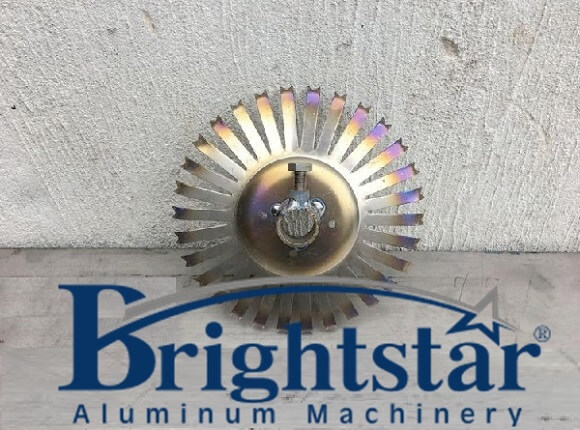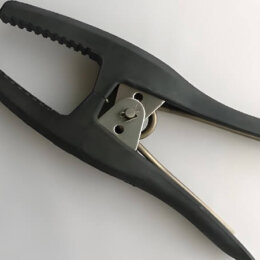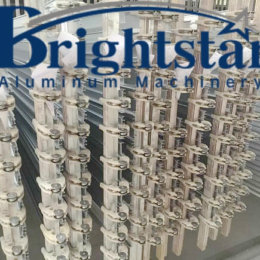Titanium fixture in aluminum profiles anodizing
Titanium fixture in aluminum profiles anodizing
Titanium fixture application for aluminum profiles anodizing
In addition to meeting certain mechanical strength, good electrical conductivity and good elasticity, the conductive fixture used for aluminum profile anodizing should not be corroded during the anodizing process, therefore, aluminum alloys are used in traditional processes.
There are also some problems with aluminum alloy materials used as conductive fixtures.
Each time they are used, an oxide film will form on the surface.
This layer of oxide film is insulating. When it is used again, it must be removed before it can be used again.
It is not convenient to obtain the desired quality of the oxide film before it is exhausted; and each time the film is removed, the thickness of the material will lose about 20µm.
If you can not handle it properly, the amount of loss will be greater.
In addition, if the fixture is a riveted assembly, it may also be loose due to dissolution, loss of electrical conductivity and suspension of anodization, resulting in repair of the workpiece.
In order to avoid this kind of situation, it can be protected by insulating coating on the riveted joint, but with little effect.
Another disadvantage of using aluminum fixtures is that the surface area of the fixture often exceeds the surface area of the workpiece being clamped.
Most of the fixtures are made of aluminum alloys with high copper content, so it accelerates the accumulation of impurities such as aluminum and copper in the solution and shortens This increases the service life of the solution.
For this purpose, anodizing jigs were produced by using titanium materials instead of aluminum metal, and the effect was very good after many years of application.
Compared with aluminum alloy fixture, titanium fixture has obvious advantages:
1. Good material corrosion resistance
During the anodizing process of aluminum profiles, titanium will form a very thin purple-blue oxide film on the surface.
This dense cover film can prevent the continued oxidation of the titanium in the inner layer, so it will not pollute the anodizing solution.
2. No need to release film for fixture
The violet-blue oxide film formed during the anodization is very dense, but it is thin and not hard.
As long as the fixture is in contact with the anodized part when it is used again, the film layer will be damaged and the current can be conducted normally. Therefore, there is no need to remove the film.
3.Long using life
When the aluminum profile is anodized, an oxide film of about 1 µm is formed on the surface of the titanium fixture, which basically does not lose, and has high mechanical strength, so it has very little natural damage and can be used for a long time.
4. Guaranteed quality of aluminum profile anodizing
Titanium has good elasticity, the fixture is firm and reliable, and there is no worry of falling off or breaking.
It can also reduce the contact area and reduce the jig marks, which is beneficial to the quality of the oxide film and finish product rate.
Production of titanium fixture
1. Determine the cross section of the fixture according to the intensity of the current that the workpiece needs to pass.
Titanium has relatively poor electrical conductivity.
For the production of clamps that clamp large-area parts, pay attention to the requirements of the strength of the current, to avoid heating due to excessive resistance, and even to burn the workpiece.
2.Welding requirements of fixture
No gap is left when the component clamp is welded, so as to prevent the solution in the gap from being thoroughly cleaned and brought into the solution in the next process, which will cause pollution.
3.Precautions for titanium material selection
When selecting the materials for titanium fixtures, it was found that some were too hard, which caused laborious work when clamping workpieces, and thinner workpieces were easily deformed; others were too soft, poor elasticity, and the clamps were easy to fall. Tal-3 (y) is recommended.
Of course, it is also necessary to consider the shape of the fixture and the specifications of the material. It is best to make a sample first, and use it before mass production.





